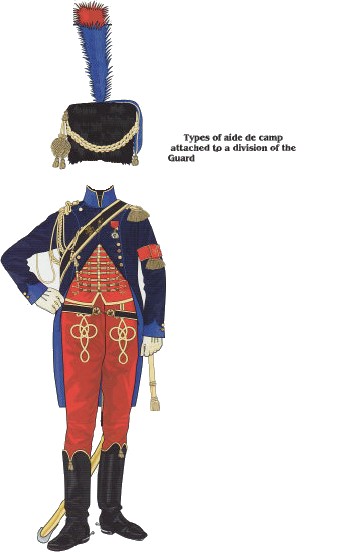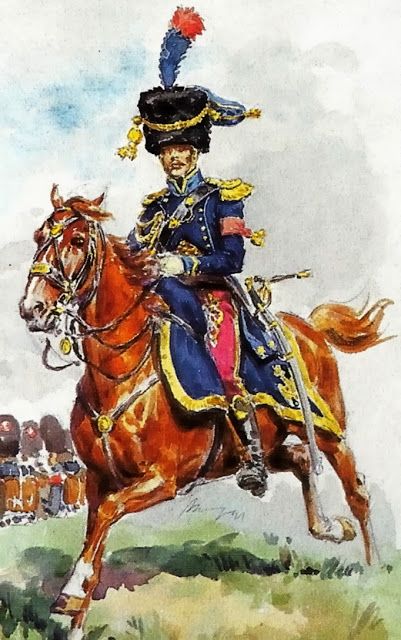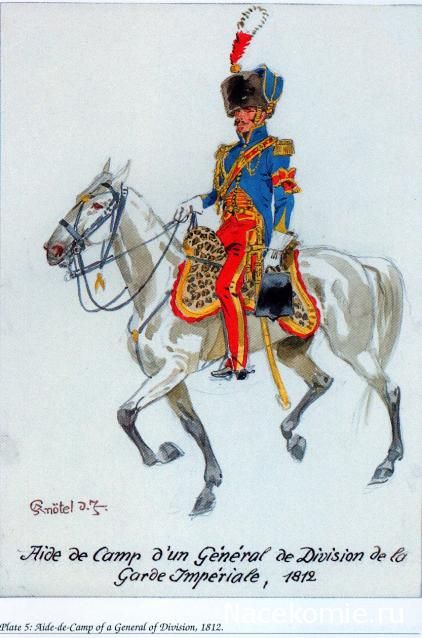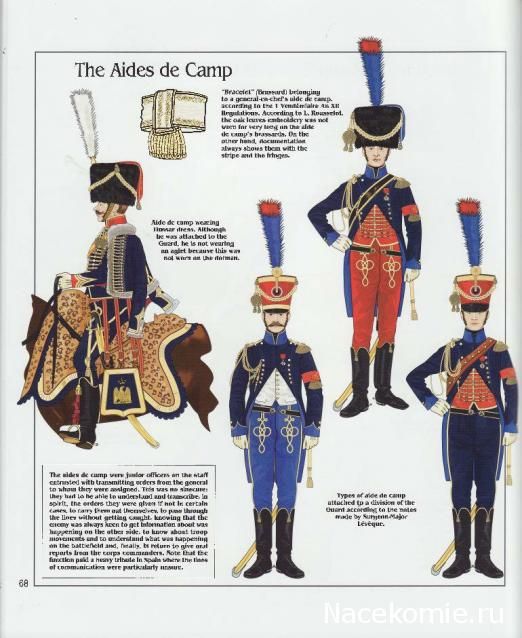Zastrow.cuirassier
PlanetFigure Supporter
New from MM
2 Foot figures and one Mounted





General Jean-Ambroise Baston de Lariboisière
He was born on August 18, 1759 in Fougères, in the department of Ille-et-Vilaine.
His father, Ambroise Baston, Sieur de Lariboisière, was advisor to the King, lieutenant general civil and criminal of the Seneschalde of Fougeres. The mother of the future general of Lariboisière was his second wife.
He studied at the colleges of Fougères and Rennes. He is then admitted to the artillery school of La Fère. He completed his training with the rank of second lieutenant in April 1781.
In 1785, he met and became friends with Napoleon Bonaparte, then a young officer and ten years his junior, while both are garrisoned in Valencia.
We then find Lariboisière in garrison in the cities of Douai, Auxonne and Strasbourg. It was in this city that he was appointed captain of the 5th Artillery Regiment on April 1, 1791.
On April 19, 1786, he married, in Fougeres, Marie-Jeanne The Beschu de la Raslaye (1760-1844). From this union will be born three children: a girl died shortly after her birth and two sons, Honoré-Charles (1788-1868) and Bonaventure-Ferdinand (1791-1812).
Lariboisière, a republican officer, served under General Custine to the army of the Vosges in September 1792.
Then, appointed battalion commander of the Army of the Rhine, he is deputy director of the Mainz artillery park. Following the famous siege of this city, which lasted four months, the city capitulates to the Prussians and Lariboisière is prisoner from July 23 to December 20, 1793.
He was promoted to head of artillery brigade (colonel) on November 6, 1796. A member of the Central Artillery Committee on November 13 of the same year, he was actively involved in the reorganization of this weapon.
Then, he was successively at the direction of the artillery park of the army of England on January 9, 1798, the army of Helvetia still in 1798, the army of the Danube in 1799 and the army of Rhine, under Moreau, in 1800.
He was appointed brigadier general on August 29, 1803, we find him at the camps of Boulogne, then de Bruhes, under Davout, on April 26, 1805, where he commands the artillery.
On September 12, 1805, he commanded the artillery of the 4th Corps of Marshal Soult.
He participated in the battles of Austerlitz, December 2, 1805, Jena, October 14, 1806. He was slightly injured when the city of Lübeck took the November 6, 1806.
On January 3, 1807, he was appointed Major General and Commander-in-Chief of the Artillery of the Imperial Guard.
He conducted himself bravely to Eylau, February 8, 1807. At the end of February 1807, he commanded the artillery of Marshal Lefebvre's Xth Corps at the siege of Dantzig. He is wounded by a biscay that breaks the guard of his sword.
He is grand officer of the Legion of Honor on June 4, 1807.
It was he who built on the Niemen, the raft which served for the interview of Tilsit between Napoleon and Tsar Alexander I, on June 25, 1807.
He was later appointed governor of Hanover, where he displayed great probity, including refusing a large sum that the magistrates of the country wanted to offer him.
Taking advantage of a break, in December 1807, he bought the castle of Monthorin, of the seventeenth century, in Louvigné-du-Désert, around Fougères, in the department of Ille-et-Vilaine. He liked this residence very much, which he will enlarge and embellish.
We find him, February 20, 1808, commander-in-chief of the artillery of the army of Spain. He is in Somo Sierra on November 30, 1808 and in the capture of Madrid on December 3, 1808.
He was Earl of the Empire in October 1808 and Grand Cross of the Iron Crown in 1809.
Returning to Paris on March 8, 1809, he was appointed on March 9, director of artillery parks of the German army.
Commander of the artillery of the Imperial Guard during the absence of General Lauriston in May 1809, he commanded the artillery of the Grand Army, replacing General Songis, ill.
After the battle of Essling (May 21-22, 1809), with Bertrand, commander of the genius, he throws the nine bridges over the Danube which will allow the retreat of the Grande Armée; and always with Bertrand, he will fortify Lobau Island.
On July 6, 1809, he contributed to the victory of Wagram, with Lauriston and Drouot, by setting up a massive concentration of artillery.
His eldest son, Honoré-Charles, received the baptism of fire at Wagram, just out of the Ecole Polytechnique with the rank of lieutenant of artillery.
His second son, Bonaventure-Ferdinand, was charged with bringing to the Empress the news of Wagram's victory over the Austrian army.
In 1810, Lariboisière bought the hotel of President Le Peletier de Rosambo, at numbers 62 and 64 of rue de Bondy, today rue René Boulanger, in the 10th arrondissement of Paris. The piercing of Taylor Street will make this hotel disappear in 1880.
Suite à la mort du général Songis (1761-1810), il est premier inspecteur général de l'artillerie le 20 février 1811. Il améliorera la mobilité et la puissance de l'artillerie, notamment en ce qui concerne les canons à longue portée.
On January 9, 1812, he was appointed Commander-in-Chief of the Grand Army Artillery, which was preparing for the Russian Campaign.
He takes care of gathering the material necessary for this enterprise.
This task ended, he joined the Emperor in Posen on June 12, 1812 and the army crossed the Niemen at Kovno on June 24 ...
His two sons serve in this army; the eldest, Honoré-Charles, is his father's aide-de-camp and the youngest, Bonaventure-Ferdinand, as a lieutenant in the 1st regiment of carabineers.
August 17, 1812, thanks to a massive concentration of artillery, Smolensk is taken.
On the eve of the battle of the Moskowa on September 7, 1812, he built three fortified batteries to counterbalance the Russian redoubts. During this battle, he has the great pain of losing his young son, Bonaventure-Ferdinand, mortally wounded and whose scene of his death is represented in the famous painting of Lejeune "Battle of the Moskowa, September 7, 1812" (visible at the Palace of Versailles).
During the retreat, Lariboisière organized the Smolensk defense in November 1812 and he was at the Battle of Krasnoe, November 16-19, 1812.
Due to the harsh climate, he is suffering from a chest inflammation. After the passage of the Berezina, his surviving son, Honore-Charles had frozen feet. He arrived, along with him and his other orderly officer Plagnat de la Faye, at Koenigsberg, where, tired and sick, he died of exhaustion on December 21, 1812 at age 53.
In the Moniteur of January 7, 1813, Berthier, Prince of Neuchâtel and major-general, announces his death: "the army has made a great loss with the death of General Count de Lariboisière", "an officer of great merit" .
The son of the general, Honoré-Charles, was received by Napoleon on March 20, 1813 at the Tuileries. The Emperor said to him: "Your father's memory compels me to think of you." He was appointed chamberlain two days later.
During the Hundred Days, he will be Napoleon's ordnance officer.
Lariboisière rests at the Invalides, with his son Bonaventure-Ferdinand, in the crypt of the Chapel of the Dome. Their hearts were deposited in the chapel of Monthorin Castle.
There was, in Fougères, until 1942 an equestrian statue of Lariboisière. She was abducted by the occupier.
The name of General Lariboisière is inscribed on the east side of the Arc de Triomphe of Etoile.
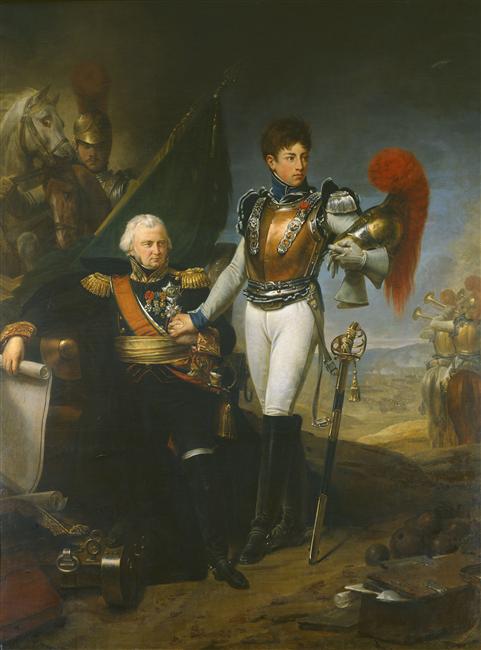
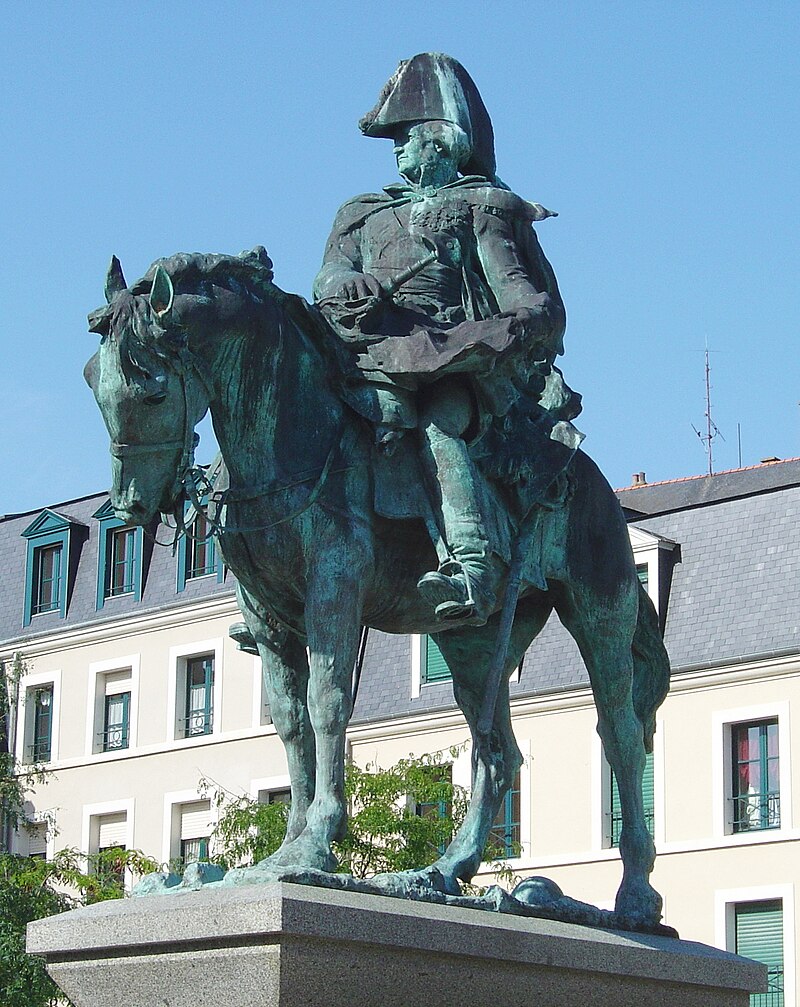
And also



Aide de camp attached to a division of theImperial Guard
And to close in beauty:


 General Rapp aide-de-camp of the Emperor
General Rapp aide-de-camp of the Emperor
Jean Rapp is an Alsatian from Colmar, where he was born on April 27, 1771, the fourth of ten children, in the home of Jean Rapp and Catherine-Salomé Edighoffen, both from old bourgeois families in the city.
His father, an honorable manufacturer of buttons, is also a municipal official and runs a customs office, which has earned him the name of "concierge" in many of his son's biographies.
His parents, of Lutheran confession, wishing to make him a pastor, Rapp follows a solid secondary education, during which he meets Kleber. But, turbulent and endowed with an extraordinary force, the young man, whose two uncles serve in the royal army, ends up choosing the military career. At the age of seventeen, in March 1788, he enlisted in a cavalry regiment, the Cévennes hunters, stationed near Colmar.
Although he is distinguished by his fearlessness and his injuries, he must wait until April 1794 to be elected second lieutenant then lieutenant. A year later, in May 1795, severely wounded by several saber strikes on his head and left arm, the time for retirement seemed to come. It was, however, that his career took his real departure: an uncle (another), made him obtain an assignment as temporary aide-de-camp of General Louis Charles Antoine Desaix (19 December 1796).
Under it, he first defended Fort Kehl, picking up a new wound, a shot in his right knee. In May 1797, his assignment with Desaix is confirmed and is accompanied by a promotion. It was Captain Rapp who accompanied his leader to Italy a few months later, and at Passariano, near Campo-Formio, made the meeting of Napoleon Bonaparte.
Desaix then takes his aide-de-camp to Egypt. Rapp makes the crossing on the frigate La Courageuse, aboard which he frequents Gaspard Monge and Dominique Vivant-Denon, which he knows how to be appreciated. Present in all the battles (Malta, landing of Alexandria, battle of the Pyramids), he shines there by his courage and his resolution. At Sediman, on October 8, 1798, he was appointed Squadron Leader after seizing Turkish artillery with his men. The next January 22nd, in Samahoud, a new wound soon earned him the rank of Brigadier (Colonel, February 15). He then ensures the connection between Kleber and Desaix, after the departure of Napoleon Bonaparte, during the negotiations that precede the armistice of El-Arish (January 28, 1800).
Taken by the English on March 4, 1800, at the same time as Desaix, on the brig that brings them back to France, he is released on April 29 and joined the army of Italy, June 11, only to see his death chief and friend, on the 14th, in Marengo (the same day, he loses another comrade, in Cairo, with the assassination of Kléber).
Bonaparte then added him as an aide-de-camp, a title which Rapp kept until 1814. The first Consul attached himself to this placid boy whose freedom of tone was accompanied by a solid common sense.
During the following years, Jean Rapp was entrusted with the most diverse tasks: information mission in the Vendée (July-August 1800); organization and command of the Mameluke squadron (1801) in Marseilles then at the Tuileries; missions to Switzerland (1802, 1803), Belgium (1803), Hanover and the mouths of the Elbe (1803); mission to Toulon near Ganteaume, maritime prefect (1803-1804); toured in Luxembourg with Napoleon in 1804; investigation of the discontent of the Guard, the same year.
On August 29, 1803, Rapp was appointed Brigadier General; on June 14, 1804, he became commander of the Legion of Honor; On March 28, 1805, he married Rosalie-Barbe-Josèphe Vanlerberghe, fourteen years old and one million dowry.
The year 1805 is the year of the return to the battlefields. At Austerlitz, at the head of his Mamluks, Rapp charged and routed the cavalry of the Russian Imperial Guard. Wounded, he is quoted in the bulletin of the Grand Army and promoted to Major General (24 December 1805).
Once past the wedding festivities of his friend Prince Eugene (14 and 15 January 1806), various inspection missions in Germany occupied Rapp during the first months of 1806, after which Napoleon 1st appointed him to the command of the 5th military division , Strasbourg (6 July). There is little left. On the 29th of September he was ordered to set out. The Prussian campaign begins. At the end of October, he is in Berlin where he directs the search for the treasures of the King of Prussia.
The Polish campaign, which follows immediately, sees it illustrated by the destruction of the Russian cavalry of General Kamensky (December 24) and the capture of Golymin (December 26). Again seriously wounded in the arm during this last feats of arms, Rapp - who holds the record of injuries for a general, as well as Oudinot for the marshals - refuses to be amputated.
Appointed governor of Thorn, then, on May 28, 1807, of Danzig, a place to which the Emperor declared "an unmeasured importance", Rapp manifested in these posts a moderation which Napoleon did not appreciate very much. But the imperial discontent does not move his phlegmatic aide-de-camp, especially since this bad mood has no negative effect on the flow of favors which Rapp is the object: granting a title of count of the Empire (January 28, 1809) and considerable endowments.
In early 1809, Rapp joined the army for the Austrian campaign. His action is decisive in Essling where he restores the situation at the head of the riflemen of the Guard. It is no less so on October 12, in Schönbrunn, when it prevents the assassination of Napoleon by Friedrich Staps.
In June 1810, Jean Rapp resumed his command at Danzig, having spent several months in Paris without power, because of illness, to participate in the festivities of the marriage of Napoleon and Marie-Louise. In August, he became Grand Officer of the Legion of Honor, which, with the Iron Crown received in 1807, the Grand Crosses of the orders of the Lion of Bavaria, the Military Merit of Maximilian Joseph, the order of the Fidelity of Baden, of the order of the Two Sicilies, later of the Order of Reunion (April 3, 1813) and the posthumous rank of Commander of the Order of St. Louis, made him one of the military the most decorated of his time.
Shortly before the Russian campaign, Napoleon I ordered a report on the state of mind of the Germans. The governor of Danzig, without bothering to arouse again the imperial discontent, announces without fete that any failure of the expedition would soon bring about the defection of the German princes allied with France.
Rapp, whom Napoleon reproaches for not wanting to make war and who agrees to it, nevertheless follows his sovereign in Russia and receives four wounds in the Moskva in one and a half hours, which leads to total to twenty-two. Barely restored, he rescued Napoleon's life by repelling a Cossack attack on Gorodina on 25 October. During the retreat, he fought in the rearguard, near Marshal Ney, and gained a new wound at the Battle of Berezina (November 28). On the 5th of December, the Emperor announces his departure for Paris and sends him back to Danzig,
Locked in the city, Rapp and the 32,000 men of the Xth Corps, which he has just received command, undergo a siege of nearly a year. When they surrender to the Russians on January 1, 1814, there remain to the governor of Dantzick less than 6,000 soldiers. All, as well as their general, are conducted to Ukraine and interned, in defiance of the terms of capitulation.
Bonaparte's former aide-de-camp returned to Paris in July 1814 and rallied to Louis XVIII, who conferred on him the title of Knight of the Order of St. Louis and the Grand Cross of the Legion of Honor. In March 1815, Rapp received the command of the 2nd corps, destined to arrest Napoleon. But his soldiers refuse to fight. Rapp accompanied the king as far as Ecouen, returned to Paris, handed over his troops to the Ministry of War, and after an interview with the Emperor at the Tuileries, on the 22nd of March, resumed service with him.
Placed at the head of the 5th observation corps (renamed Army of the Rhine on April 16), as well as the 5th military division, Rapp arrived in Strasbourg on April 7, 1815 and immediately deployed an intense activity, rewarded by the title of peer. of France, granted on June 2nd. Still, he found time to be elected to the chamber (May 13).
When hostilities begin, despite the weakness of the forces he has in front of those of the Allies, he takes the offensive on the news of the victory of Ligny (June 16). But that of the defeat of Waterloo requires him to fall back on Strasbourg, which he does in good order and not without some local success. On June 29, the city is invested but Rapp does not yield until July 22, well after the abdication, for the sake of keeping Alsace to France.
Rapp takes advantage of his non-activity to remarry on January 12, 1816 (he divorced his first wife in 1811). Louis XVIII appoints him to the House of Peers in 1819; in 1820 he became his first chamberlain and the master of his wardrobe.
Jean Rapp died in Rheinwiller, in the country of Baden, November 8, 1821, of a cancer of the pylorus (denominated squirre at that time). He is buried in the Ladhof Cemetery in Colmar.
* * *
Throughout his career, Rapp kept his outspokenness, not hesitating to contradict Napoleon on occasion.
Thus, after the signature of the Concordat, Bonaparte affirming: "You will go to Mass now," Rapp replied, "No, my General. It is good for you. Moreover, provided you name these people [the priests] neither your aides-de-camp nor your cooks, I do not care. "
In the same way, after Golymin's fight, the Emperor came to see him. "Well, Rapp, you're still hurt, and still on the wrong arm. "No wonder, sire, always fighting. "
At Danzig, shortly before the Russian campaign, Napoleon observed: "I see that you no longer want to go to war. "I agree, Sire."
During the retreat of Russia, at Smolensk, Napoleon having said to him: "You can be quiet, now you will not be killed in this campaign. "But I could be frozen. "
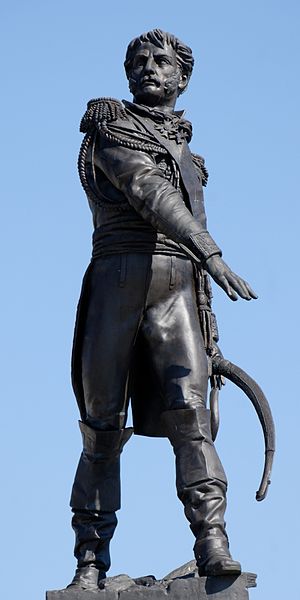
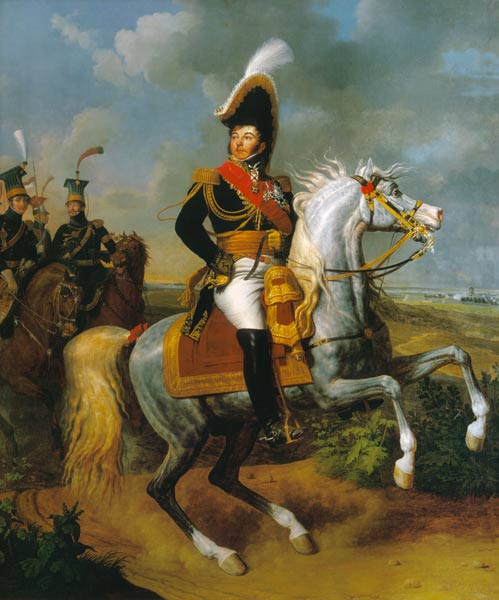
Metal
54mm
Sculptor : Bruno Leibovitz
And sure it's metal !!!!!
For order and other photos
http://www.metal-modeles.com/index.php/fr/component/virtuemart/nouveautes
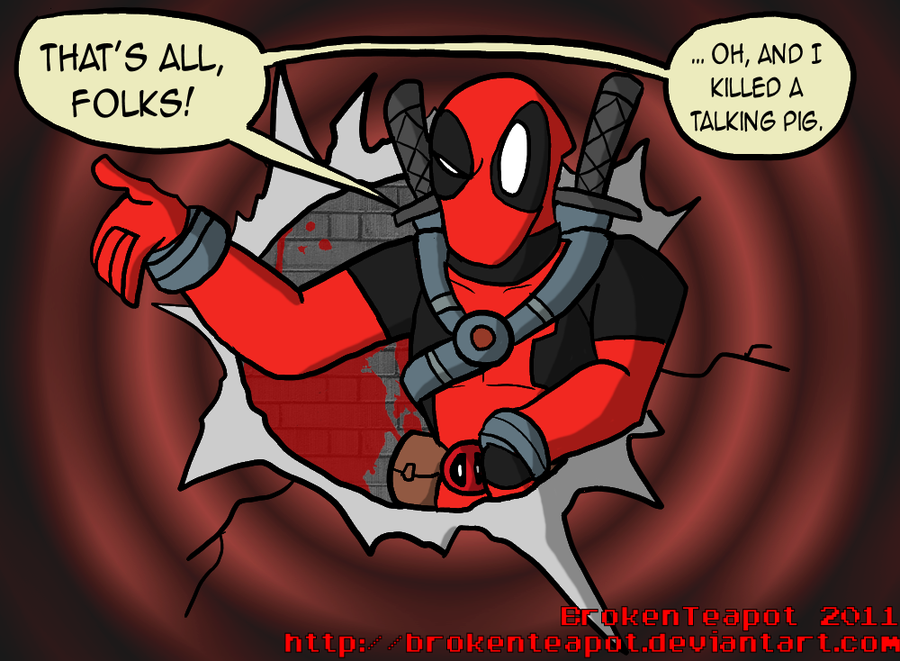
2 Foot figures and one Mounted





General Jean-Ambroise Baston de Lariboisière
He was born on August 18, 1759 in Fougères, in the department of Ille-et-Vilaine.
His father, Ambroise Baston, Sieur de Lariboisière, was advisor to the King, lieutenant general civil and criminal of the Seneschalde of Fougeres. The mother of the future general of Lariboisière was his second wife.
He studied at the colleges of Fougères and Rennes. He is then admitted to the artillery school of La Fère. He completed his training with the rank of second lieutenant in April 1781.
In 1785, he met and became friends with Napoleon Bonaparte, then a young officer and ten years his junior, while both are garrisoned in Valencia.
We then find Lariboisière in garrison in the cities of Douai, Auxonne and Strasbourg. It was in this city that he was appointed captain of the 5th Artillery Regiment on April 1, 1791.
On April 19, 1786, he married, in Fougeres, Marie-Jeanne The Beschu de la Raslaye (1760-1844). From this union will be born three children: a girl died shortly after her birth and two sons, Honoré-Charles (1788-1868) and Bonaventure-Ferdinand (1791-1812).
Lariboisière, a republican officer, served under General Custine to the army of the Vosges in September 1792.
Then, appointed battalion commander of the Army of the Rhine, he is deputy director of the Mainz artillery park. Following the famous siege of this city, which lasted four months, the city capitulates to the Prussians and Lariboisière is prisoner from July 23 to December 20, 1793.
He was promoted to head of artillery brigade (colonel) on November 6, 1796. A member of the Central Artillery Committee on November 13 of the same year, he was actively involved in the reorganization of this weapon.
Then, he was successively at the direction of the artillery park of the army of England on January 9, 1798, the army of Helvetia still in 1798, the army of the Danube in 1799 and the army of Rhine, under Moreau, in 1800.
He was appointed brigadier general on August 29, 1803, we find him at the camps of Boulogne, then de Bruhes, under Davout, on April 26, 1805, where he commands the artillery.
On September 12, 1805, he commanded the artillery of the 4th Corps of Marshal Soult.
He participated in the battles of Austerlitz, December 2, 1805, Jena, October 14, 1806. He was slightly injured when the city of Lübeck took the November 6, 1806.
On January 3, 1807, he was appointed Major General and Commander-in-Chief of the Artillery of the Imperial Guard.
He conducted himself bravely to Eylau, February 8, 1807. At the end of February 1807, he commanded the artillery of Marshal Lefebvre's Xth Corps at the siege of Dantzig. He is wounded by a biscay that breaks the guard of his sword.
He is grand officer of the Legion of Honor on June 4, 1807.
It was he who built on the Niemen, the raft which served for the interview of Tilsit between Napoleon and Tsar Alexander I, on June 25, 1807.
He was later appointed governor of Hanover, where he displayed great probity, including refusing a large sum that the magistrates of the country wanted to offer him.
Taking advantage of a break, in December 1807, he bought the castle of Monthorin, of the seventeenth century, in Louvigné-du-Désert, around Fougères, in the department of Ille-et-Vilaine. He liked this residence very much, which he will enlarge and embellish.
We find him, February 20, 1808, commander-in-chief of the artillery of the army of Spain. He is in Somo Sierra on November 30, 1808 and in the capture of Madrid on December 3, 1808.
He was Earl of the Empire in October 1808 and Grand Cross of the Iron Crown in 1809.
Returning to Paris on March 8, 1809, he was appointed on March 9, director of artillery parks of the German army.
Commander of the artillery of the Imperial Guard during the absence of General Lauriston in May 1809, he commanded the artillery of the Grand Army, replacing General Songis, ill.
After the battle of Essling (May 21-22, 1809), with Bertrand, commander of the genius, he throws the nine bridges over the Danube which will allow the retreat of the Grande Armée; and always with Bertrand, he will fortify Lobau Island.
On July 6, 1809, he contributed to the victory of Wagram, with Lauriston and Drouot, by setting up a massive concentration of artillery.
His eldest son, Honoré-Charles, received the baptism of fire at Wagram, just out of the Ecole Polytechnique with the rank of lieutenant of artillery.
His second son, Bonaventure-Ferdinand, was charged with bringing to the Empress the news of Wagram's victory over the Austrian army.
In 1810, Lariboisière bought the hotel of President Le Peletier de Rosambo, at numbers 62 and 64 of rue de Bondy, today rue René Boulanger, in the 10th arrondissement of Paris. The piercing of Taylor Street will make this hotel disappear in 1880.
Suite à la mort du général Songis (1761-1810), il est premier inspecteur général de l'artillerie le 20 février 1811. Il améliorera la mobilité et la puissance de l'artillerie, notamment en ce qui concerne les canons à longue portée.
On January 9, 1812, he was appointed Commander-in-Chief of the Grand Army Artillery, which was preparing for the Russian Campaign.
He takes care of gathering the material necessary for this enterprise.
This task ended, he joined the Emperor in Posen on June 12, 1812 and the army crossed the Niemen at Kovno on June 24 ...
His two sons serve in this army; the eldest, Honoré-Charles, is his father's aide-de-camp and the youngest, Bonaventure-Ferdinand, as a lieutenant in the 1st regiment of carabineers.
August 17, 1812, thanks to a massive concentration of artillery, Smolensk is taken.
On the eve of the battle of the Moskowa on September 7, 1812, he built three fortified batteries to counterbalance the Russian redoubts. During this battle, he has the great pain of losing his young son, Bonaventure-Ferdinand, mortally wounded and whose scene of his death is represented in the famous painting of Lejeune "Battle of the Moskowa, September 7, 1812" (visible at the Palace of Versailles).
During the retreat, Lariboisière organized the Smolensk defense in November 1812 and he was at the Battle of Krasnoe, November 16-19, 1812.
Due to the harsh climate, he is suffering from a chest inflammation. After the passage of the Berezina, his surviving son, Honore-Charles had frozen feet. He arrived, along with him and his other orderly officer Plagnat de la Faye, at Koenigsberg, where, tired and sick, he died of exhaustion on December 21, 1812 at age 53.
In the Moniteur of January 7, 1813, Berthier, Prince of Neuchâtel and major-general, announces his death: "the army has made a great loss with the death of General Count de Lariboisière", "an officer of great merit" .
The son of the general, Honoré-Charles, was received by Napoleon on March 20, 1813 at the Tuileries. The Emperor said to him: "Your father's memory compels me to think of you." He was appointed chamberlain two days later.
During the Hundred Days, he will be Napoleon's ordnance officer.
Lariboisière rests at the Invalides, with his son Bonaventure-Ferdinand, in the crypt of the Chapel of the Dome. Their hearts were deposited in the chapel of Monthorin Castle.
There was, in Fougères, until 1942 an equestrian statue of Lariboisière. She was abducted by the occupier.
The name of General Lariboisière is inscribed on the east side of the Arc de Triomphe of Etoile.


And also



Aide de camp attached to a division of theImperial Guard
And to close in beauty:



Jean Rapp is an Alsatian from Colmar, where he was born on April 27, 1771, the fourth of ten children, in the home of Jean Rapp and Catherine-Salomé Edighoffen, both from old bourgeois families in the city.
His father, an honorable manufacturer of buttons, is also a municipal official and runs a customs office, which has earned him the name of "concierge" in many of his son's biographies.
His parents, of Lutheran confession, wishing to make him a pastor, Rapp follows a solid secondary education, during which he meets Kleber. But, turbulent and endowed with an extraordinary force, the young man, whose two uncles serve in the royal army, ends up choosing the military career. At the age of seventeen, in March 1788, he enlisted in a cavalry regiment, the Cévennes hunters, stationed near Colmar.
Although he is distinguished by his fearlessness and his injuries, he must wait until April 1794 to be elected second lieutenant then lieutenant. A year later, in May 1795, severely wounded by several saber strikes on his head and left arm, the time for retirement seemed to come. It was, however, that his career took his real departure: an uncle (another), made him obtain an assignment as temporary aide-de-camp of General Louis Charles Antoine Desaix (19 December 1796).
Under it, he first defended Fort Kehl, picking up a new wound, a shot in his right knee. In May 1797, his assignment with Desaix is confirmed and is accompanied by a promotion. It was Captain Rapp who accompanied his leader to Italy a few months later, and at Passariano, near Campo-Formio, made the meeting of Napoleon Bonaparte.
Desaix then takes his aide-de-camp to Egypt. Rapp makes the crossing on the frigate La Courageuse, aboard which he frequents Gaspard Monge and Dominique Vivant-Denon, which he knows how to be appreciated. Present in all the battles (Malta, landing of Alexandria, battle of the Pyramids), he shines there by his courage and his resolution. At Sediman, on October 8, 1798, he was appointed Squadron Leader after seizing Turkish artillery with his men. The next January 22nd, in Samahoud, a new wound soon earned him the rank of Brigadier (Colonel, February 15). He then ensures the connection between Kleber and Desaix, after the departure of Napoleon Bonaparte, during the negotiations that precede the armistice of El-Arish (January 28, 1800).
Taken by the English on March 4, 1800, at the same time as Desaix, on the brig that brings them back to France, he is released on April 29 and joined the army of Italy, June 11, only to see his death chief and friend, on the 14th, in Marengo (the same day, he loses another comrade, in Cairo, with the assassination of Kléber).
Bonaparte then added him as an aide-de-camp, a title which Rapp kept until 1814. The first Consul attached himself to this placid boy whose freedom of tone was accompanied by a solid common sense.
During the following years, Jean Rapp was entrusted with the most diverse tasks: information mission in the Vendée (July-August 1800); organization and command of the Mameluke squadron (1801) in Marseilles then at the Tuileries; missions to Switzerland (1802, 1803), Belgium (1803), Hanover and the mouths of the Elbe (1803); mission to Toulon near Ganteaume, maritime prefect (1803-1804); toured in Luxembourg with Napoleon in 1804; investigation of the discontent of the Guard, the same year.
On August 29, 1803, Rapp was appointed Brigadier General; on June 14, 1804, he became commander of the Legion of Honor; On March 28, 1805, he married Rosalie-Barbe-Josèphe Vanlerberghe, fourteen years old and one million dowry.
The year 1805 is the year of the return to the battlefields. At Austerlitz, at the head of his Mamluks, Rapp charged and routed the cavalry of the Russian Imperial Guard. Wounded, he is quoted in the bulletin of the Grand Army and promoted to Major General (24 December 1805).
Once past the wedding festivities of his friend Prince Eugene (14 and 15 January 1806), various inspection missions in Germany occupied Rapp during the first months of 1806, after which Napoleon 1st appointed him to the command of the 5th military division , Strasbourg (6 July). There is little left. On the 29th of September he was ordered to set out. The Prussian campaign begins. At the end of October, he is in Berlin where he directs the search for the treasures of the King of Prussia.
The Polish campaign, which follows immediately, sees it illustrated by the destruction of the Russian cavalry of General Kamensky (December 24) and the capture of Golymin (December 26). Again seriously wounded in the arm during this last feats of arms, Rapp - who holds the record of injuries for a general, as well as Oudinot for the marshals - refuses to be amputated.
Appointed governor of Thorn, then, on May 28, 1807, of Danzig, a place to which the Emperor declared "an unmeasured importance", Rapp manifested in these posts a moderation which Napoleon did not appreciate very much. But the imperial discontent does not move his phlegmatic aide-de-camp, especially since this bad mood has no negative effect on the flow of favors which Rapp is the object: granting a title of count of the Empire (January 28, 1809) and considerable endowments.
In early 1809, Rapp joined the army for the Austrian campaign. His action is decisive in Essling where he restores the situation at the head of the riflemen of the Guard. It is no less so on October 12, in Schönbrunn, when it prevents the assassination of Napoleon by Friedrich Staps.
In June 1810, Jean Rapp resumed his command at Danzig, having spent several months in Paris without power, because of illness, to participate in the festivities of the marriage of Napoleon and Marie-Louise. In August, he became Grand Officer of the Legion of Honor, which, with the Iron Crown received in 1807, the Grand Crosses of the orders of the Lion of Bavaria, the Military Merit of Maximilian Joseph, the order of the Fidelity of Baden, of the order of the Two Sicilies, later of the Order of Reunion (April 3, 1813) and the posthumous rank of Commander of the Order of St. Louis, made him one of the military the most decorated of his time.
Shortly before the Russian campaign, Napoleon I ordered a report on the state of mind of the Germans. The governor of Danzig, without bothering to arouse again the imperial discontent, announces without fete that any failure of the expedition would soon bring about the defection of the German princes allied with France.
Rapp, whom Napoleon reproaches for not wanting to make war and who agrees to it, nevertheless follows his sovereign in Russia and receives four wounds in the Moskva in one and a half hours, which leads to total to twenty-two. Barely restored, he rescued Napoleon's life by repelling a Cossack attack on Gorodina on 25 October. During the retreat, he fought in the rearguard, near Marshal Ney, and gained a new wound at the Battle of Berezina (November 28). On the 5th of December, the Emperor announces his departure for Paris and sends him back to Danzig,
Locked in the city, Rapp and the 32,000 men of the Xth Corps, which he has just received command, undergo a siege of nearly a year. When they surrender to the Russians on January 1, 1814, there remain to the governor of Dantzick less than 6,000 soldiers. All, as well as their general, are conducted to Ukraine and interned, in defiance of the terms of capitulation.
Bonaparte's former aide-de-camp returned to Paris in July 1814 and rallied to Louis XVIII, who conferred on him the title of Knight of the Order of St. Louis and the Grand Cross of the Legion of Honor. In March 1815, Rapp received the command of the 2nd corps, destined to arrest Napoleon. But his soldiers refuse to fight. Rapp accompanied the king as far as Ecouen, returned to Paris, handed over his troops to the Ministry of War, and after an interview with the Emperor at the Tuileries, on the 22nd of March, resumed service with him.
Placed at the head of the 5th observation corps (renamed Army of the Rhine on April 16), as well as the 5th military division, Rapp arrived in Strasbourg on April 7, 1815 and immediately deployed an intense activity, rewarded by the title of peer. of France, granted on June 2nd. Still, he found time to be elected to the chamber (May 13).
When hostilities begin, despite the weakness of the forces he has in front of those of the Allies, he takes the offensive on the news of the victory of Ligny (June 16). But that of the defeat of Waterloo requires him to fall back on Strasbourg, which he does in good order and not without some local success. On June 29, the city is invested but Rapp does not yield until July 22, well after the abdication, for the sake of keeping Alsace to France.
Rapp takes advantage of his non-activity to remarry on January 12, 1816 (he divorced his first wife in 1811). Louis XVIII appoints him to the House of Peers in 1819; in 1820 he became his first chamberlain and the master of his wardrobe.
Jean Rapp died in Rheinwiller, in the country of Baden, November 8, 1821, of a cancer of the pylorus (denominated squirre at that time). He is buried in the Ladhof Cemetery in Colmar.
* * *
Throughout his career, Rapp kept his outspokenness, not hesitating to contradict Napoleon on occasion.
Thus, after the signature of the Concordat, Bonaparte affirming: "You will go to Mass now," Rapp replied, "No, my General. It is good for you. Moreover, provided you name these people [the priests] neither your aides-de-camp nor your cooks, I do not care. "
In the same way, after Golymin's fight, the Emperor came to see him. "Well, Rapp, you're still hurt, and still on the wrong arm. "No wonder, sire, always fighting. "
At Danzig, shortly before the Russian campaign, Napoleon observed: "I see that you no longer want to go to war. "I agree, Sire."
During the retreat of Russia, at Smolensk, Napoleon having said to him: "You can be quiet, now you will not be killed in this campaign. "But I could be frozen. "


Metal
54mm
Sculptor : Bruno Leibovitz
And sure it's metal !!!!!
For order and other photos
http://www.metal-modeles.com/index.php/fr/component/virtuemart/nouveautes


